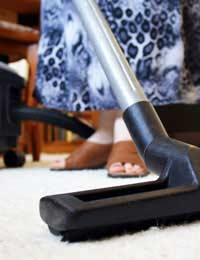Tips For Indoor Prevention

Inside Hay Fever Prevention Methods
Hay fever is an allergy to pollen and, as such, most people’s symptoms are worst when venturing outdoors during spring and summer. For some people the problem is grass pollen, and for others it’s particular flowers or trees. They all cause problems at different times of year, meaning that hay fever sufferers often try to stay behind closed doors on days when the pollen count is high.Staying Indoors to Prevent Hay Fever Symptoms
It can be irritating to be stuck inside when everyone else is outside in the sunshine having a great time – especially for children. But there’s no doubt about it, it’s often the lesser of two evils and a day inside with a carpet picnic can beat a day out in the fields with a runny nose and sore eyes. But, of course, pollen is carried on the air, and air gets inside the home too.A key thing to remember is to keep your doors and windows shut. The pollen count gets higher towards the middle of the day, so if you keep everything shut from the early part of the day, the pollen won’t get a chance to invade. Of course, if we’re lucky enough to have a warm and sunny summer, closing all the windows can leave you feeling hot and bothered. If you’re fortunate enough to have air conditioning (which many people do at work, if not at home), try to use that to keep cool instead. If you’re at home, try taking a cool shower instead. There is an added benefit to this, apart from dialling down the temperature. If you have come in from outside, you may well have pollen sticking to your hair and skin. A cool shower will send it all spinning down the drain and out of harms way.
Washing frequently is a particularly good idea for children who suffer from hay fever. Wash their face and hands whenever they come in from playing outside and give them a bath and hair wash before bed. This should aid sleep considerably if your child has a tendency to night-time snuffles.
As well as washing your skin and hair, spare a thought for keeping your home spic and span too. Vacuum frequently to stop pollen accumulating. Dusting is important too. But don’t just use a dry duster – you’ll only waft the pollen around – dampen your cloth first, to make sure the pollen gets taken up and stays up.
Hay Fever and Pets
If you have a pet, you face the problem of them bringing pollen in from the garden, even if you are dutifully staying indoors. Certainly you should try to prevent them coming into the living room or your bedroom on days with a high pollen count. Alternatively, give dogs a bath to get rid of pollen that way.Hay Fever and Laundry
When it comes to your laundry, remember to dry both clothes and bedding inside when the pollen count is high. If you are taking all sensible precautions and are still experiencing hay fever symptoms, it could be because the sheet on your bed, or the shirt on your back, is loaded with pollen.Enjoying Summer
Remember, for most hay fever sufferers, symptoms are irritating more than life threatening, and are only really troublesome when the pollen count is high. So try not to overreact and spend all summer stuck indoors. Take sensible precautions, keep an eye on the pollen count, and try to get the most out of the season.- Using a Pollen Filter to Prevent Hay Fever
- How Can Hypoallergenic Grass Help Hayfever Sufferers
- Vaccines for Hay Fever
- Hay Fever and Immune System Protection
- Understanding The Pollen Count
- How To Avoid Pollen
- Practical Tips To Prevent Hay Fever
- Starting Treatment Early
- Enjoying The Outdoors Without Hay Fever


Re: Tree Pollen
"Julia's Garland" (fr. Guirlande de Julie)
Re: Tree Pollen
"Julia's Garland" (fr. Guirlande de Julie)
Re: Tree Pollen
written on the parchment was scratched out
Re: Hay Fever And Your Lungs
I was diagnosed with Idiopathic Pulmonary Fibrosis (IPF) four years ago. For over two years, I relied on medications and various…
Re: Common Symptoms Of Hay Fever
Few months ago I had anelegic reaction in under my eyes so I was prescribed steroids antihistamine they worked. Then few weeks…
Re: Rebound Nasal Congestion
I recently had a rhynectomy for sac since the operation I have been suffering from a severe blocked nose any body offer any advice
Re: Tree Pollen
Tender lymph glands in your neck under your chin are a sure sign of the body reacting to tree pollen. My glands have been tender since January but,…
Re: Tree Pollen
Does anyone know if Hawthorn causes hayfever please? We have a lot of Hawthorn at the bottom of our garden and I'm really suffering at the moment with…
Re: Tree Pollen
Having not really suffered from any Hayfever symptoms since 1988, I can honestly say that I have never felt so rough as I have these last 6-7 weeks. So…
Re: Tree Pollen
Do conifer trees cause big hayfever allergies? Massive conifer in our front garden which we have watched spewing out pollen for weeks, coating cars. I…